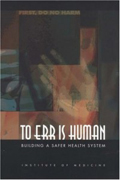Primum non nocere. First, do no harm.
By: Tricia Pil | 0 Comments
This Latin phrase is familiar to every medical student, taught in all medical schools as a fundamental axiom of patient care (for you fellow Trekkies, akin to the prime directive of non-interference). The general idea is that, when weighing the risks and benefits of a medical intervention for a given condition, the physician must first consider the intervention's potential for harm in deciding if it should be done at all. In other words, sometimes the cure can be worse than the disease.

Dr. Williams |
The principle of primum non nocere came into widespread use at the turn of the twentieth century, in large part due to Dr. J. Whitridge Williams, a prominent obstetrician at Johns Hopkins and original author of that Bible of the field, Williams Obstetrics. In 1911, Dr. Williams was invited to speak before the Committee on Midwifery:
The generally accepted motto for the guidance of the physician is 'primum non nocere' and yet... incompetent doctors kill more women each year by improperly performed operations than the ignorant midwife does by neglect of aseptic precautions.
His pejorative attack on midwives aside (and Dr. Williams was thought to be more magnanimous towards midwives than most obstetricians in his day!), it's clear from his statement that this maxim of nonmalfeasance had become standard medical approach. If Dr. Williams were alive today, what do you think he might say of our practice of elective inductions and the high rate of Cesarean sections. Primum non nocere underlies many of the guidelines physicians use today for medical decision making - it's why powerful antibiotics are not routinely prescribed for viral infections, why operative ear tube placement is not a first-line treatment for ear infections, and why EMS responders first stabilize the head and neck of a car accident victim even before beginning CPR. Although there are limitations to its applicability resulting in endless debates within medical ethics circles, primum non nocere has nevertheless undoubtedly saved many lives and averted unnecessary suffering.
 It seems that the good Dr. Williams was on to a curious paradox regarding healing and harm, however, and was perhaps an unwitting early patient safety pioneer. Nearly 100 years after his speech above, the Institute of Medicine released a landmark report titled To Err is Human. In this year 2000 report, the authors estimated that anywhere from 44,000-98,000 people die each year in hospitals due to medical error. This report also confirmed a finding published nearly ten years earlier by the Harvard Medical Practice Study in the New England Journal of Medicine: More than two-thirds of medical errors are preventable, and a 28 percent are due to negligence of a health care professional.
It seems that the good Dr. Williams was on to a curious paradox regarding healing and harm, however, and was perhaps an unwitting early patient safety pioneer. Nearly 100 years after his speech above, the Institute of Medicine released a landmark report titled To Err is Human. In this year 2000 report, the authors estimated that anywhere from 44,000-98,000 people die each year in hospitals due to medical error. This report also confirmed a finding published nearly ten years earlier by the Harvard Medical Practice Study in the New England Journal of Medicine: More than two-thirds of medical errors are preventable, and a 28 percent are due to negligence of a health care professional.
What do these numbers mean? It means that, every day and a half, a fully loaded Boeing 747 would have to drop out of the sky before passenger loss of life surpassed patient loss of life. It means that at least three fatal plane crashes every week would be the result of problems like faulty instruments, poor aircraft design and construction, control tower miscommunications, and pilot fatigue. Would we tolerate such odds each time we board a plane? Why then do we tolerate them each time we enter a hospital?
Coming soon: A closer look at causes of medical errors
Published: July 08, 2010
Tags
SensibilityProfessional Resources